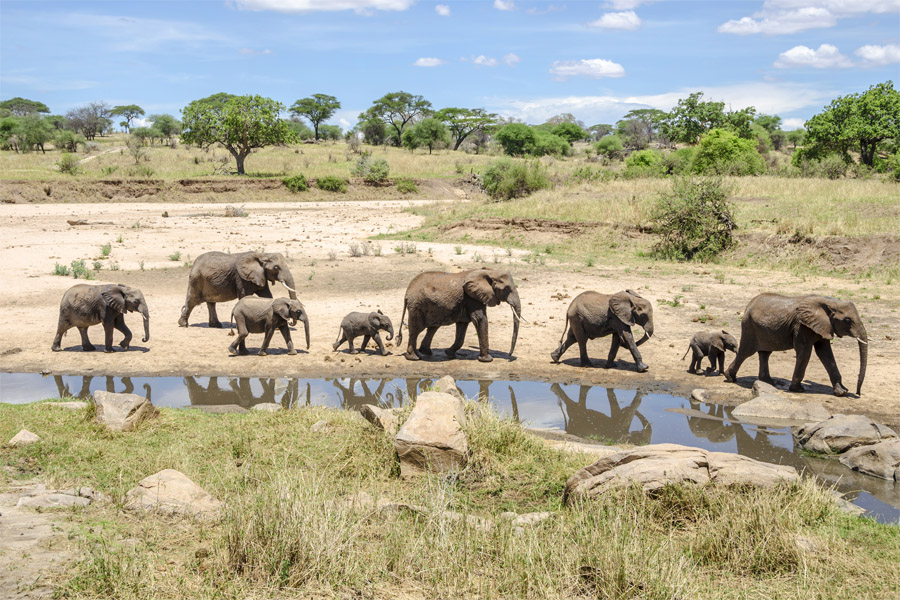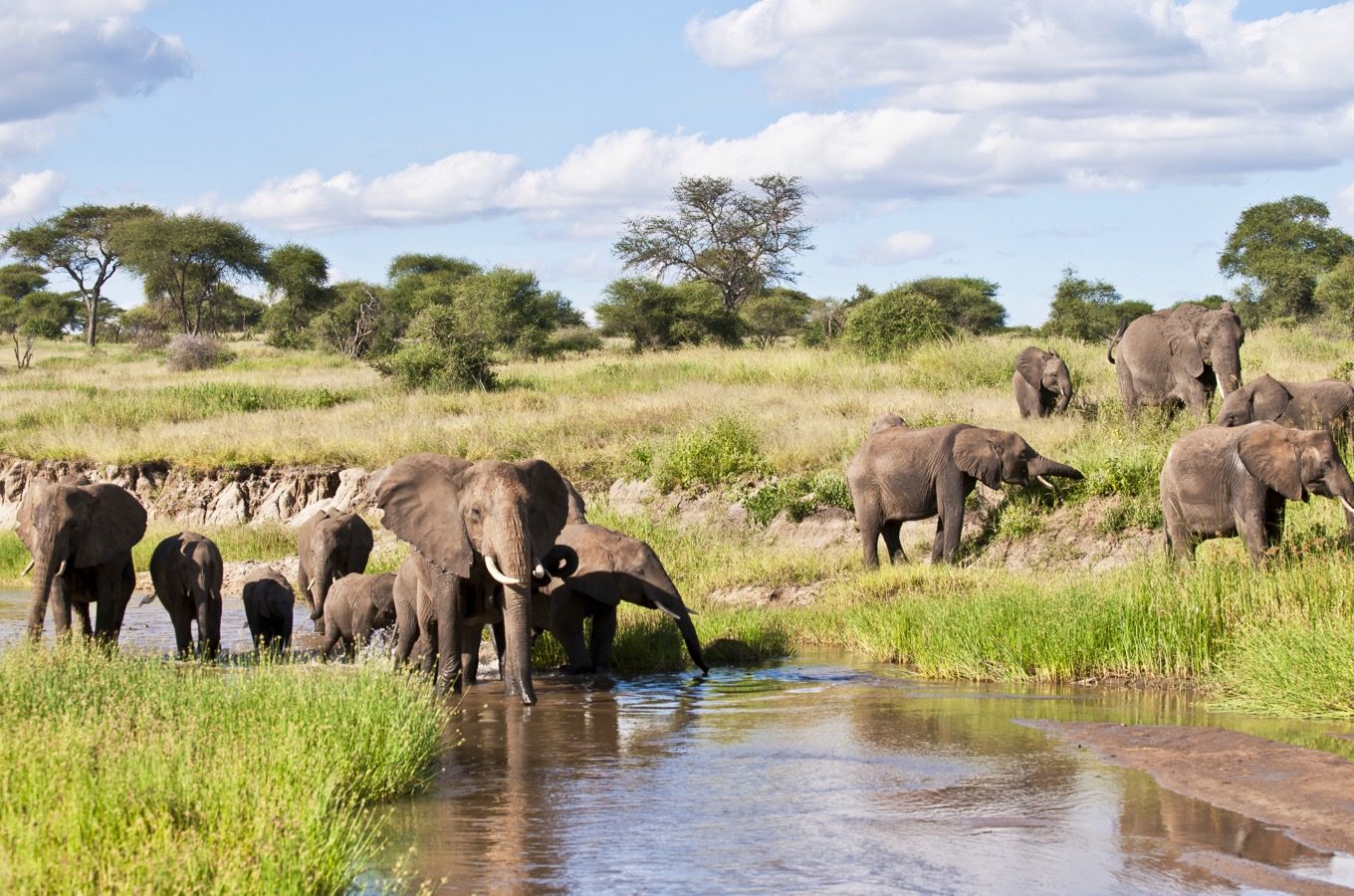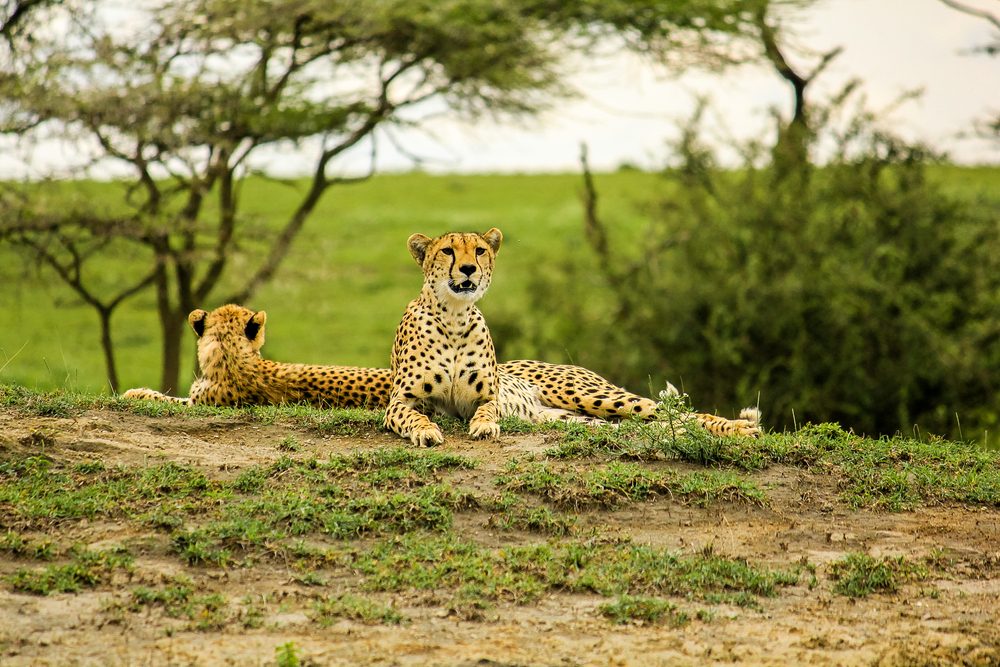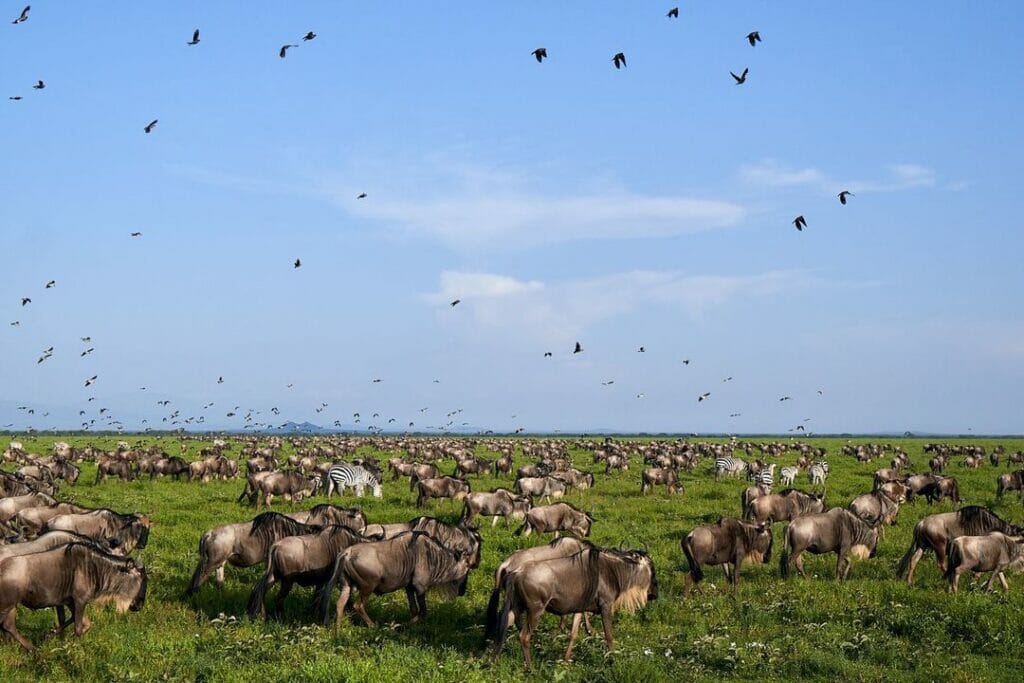Tarangire National Park

Tarangire National Park
Overview
Tarangire National Park, located in northern Tanzania, is known for its diverse wildlife, striking landscapes, and large concentrations of elephants. Covering approximately 2,850 square kilometers (1,100 square miles), it is Tanzania's sixth-largest national park and part of the Northern Safari Circuit. The park's distinctive features include ancient baobab trees, seasonal swamps, and the Tarangire River, a vital water source that attracts wildlife year-round, especially during the dry season. Tarangire is a quieter alternative to the more famous Serengeti, offering a unique and uncrowded safari experience.
Wildlife
Tarangire is renowned for its impressive elephant herds, with some groups numbering up to 300 individuals. The park is home to a wide variety of animals, including giraffes, zebras, wildebeest, impalas, and buffaloes. Predators such as lions, leopards, and cheetahs are also present, though sightings can be more elusive than in other parks. The park is especially known for its tree-climbing pythons, a rare behavior in African snakes. During the dry season, from June to October, the concentration of animals around the Tarangire River makes for some of the best game viewing in East Africa.
Birds
Birdwatchers will find Tarangire a paradise, with over 550 bird species recorded. The park is famous for its variety of raptors, including bateleurs and tawny eagles, as well as colorful species like yellow-collared lovebirds and lilac-breasted rollers. The park’s swamps are an important breeding ground for numerous waterbirds, including pelicans, herons, and egrets. Migratory birds visit the park from November to April, making it a great birding destination year-round.
Best Time To Visit
The best time to visit Tarangire National Park is during the dry season, from June to October, when wildlife congregates around the shrinking water sources, making animals easier to spot. The wet season, from November to May, is a great time for birdwatching as migratory birds arrive and the landscape turns lush and green. The short rainy season, from November to December, and the long rainy season, from March to May, see fewer tourists, offering a more tranquil safari experience.
Weather & Climate
Tarangire has a tropical climate with distinct wet and dry seasons. Temperatures remain warm throughout the year, ranging from 16°C to 30°C (61°F to 86°F). The long rains fall from March to May, leading to lush vegetation, while the short rains occur from November to December. The dry season, from June to October, is cooler and ideal for game drives, with wildlife concentrating around water sources like the Tarangire River and Silale Swamps.
Getting There
Tarangire National Park is easily accessible, located just 120 kilometers (75 miles) southwest of Arusha—a drive of about two hours. It is a convenient stop for those traveling on the Northern Safari Circuit, often combined with visits to Ngorongoro Crater, Serengeti, and Lake Manyara. There is a small airstrip near the park for charter flights, with connections from Arusha and other key safari destinations in Tanzania.




